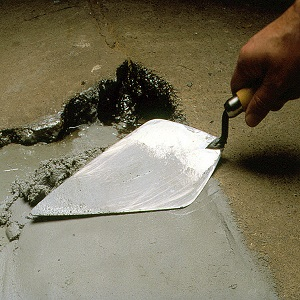The Right Material for Commercial Concrete Crack Repair

When concrete cracks, the question is which is better for commercial concrete crack repair, epoxy or polyurethane foam? The answer is not always clear since both materials can be used to make the repair, but will depend on a few factors to determine the better choice. In some cases, the professional making the repair may use the product they have the most experience with out of the two materials.
Generally, the guide to what material will work better is whether the crack in the concrete requires structural repair and strength, or if the area around the crack needs to be strengthened more than the concrete around it. In this case, epoxy is the right choice. If the crack requires repair to prevent water leakage, or is currently leaking, then polyurethane is the better choice of the two materials.
Each material has both advantages or limitations and a more complete explanation of these materials include:
Epoxy
Epoxy come in a range of viscosities with one of the main advantages being the compressive strength that can be at 12,000 psi or greater. This material can be injected and allows for the repair of different crack widths. The downside is epoxy takes time to cure and can take hours to harden, and, because of this, it may leak out when used for certain applications.
Polyurethanes
Polyurethane foam is a material that is right for leaks since it is fast setting and an elastic type material that is perfect for waterproofing. The properties that make this material to be elastomeric allow the concrete to have movement during different weather conditions. The downside is this material is not able to be used for structural repair.

Capital Industries, Inc. is a leading supplier of commercial and industrial concrete repair products. For over 30 years, we have proudly serviced contractors, factories, warehouses and distribution centers for industrial, institutional and commercial customers. We carry a full range of concrete repair materials, including those specifically designed for low temperature areas such as freezers and coolers. Our floor repair products are rapid hardening, allowing you to reopen repaired areas with minimal downtime. All of our products are designed to be used by in-house maintenance personnel and come with an ironclad 100% guarantee of satisfaction.

